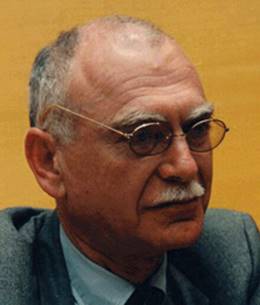Background
Itamar Even-Zohar, born 1939, is an Israeli culture researcher and professor at Tel Aviv University. Even-Zohar is a pioneer of polysystem theory and the theory of cultural repertoires.
Itamar Even-Zohar, born 1939, is an Israeli culture researcher and professor at Tel Aviv University. Even-Zohar is a pioneer of polysystem theory and the theory of cultural repertoires.
After broadening of approaches towards translation from static ones to skopos theory, and then register and discourse analysis, relating language to its socio-cultural function in 1960’s, a new model called “poly-system theory was developed in 1970’s. The theorists saw translated literature as a system operating in the larger social, literary and historical systems of the target culture. This was an important move, as till that point, translated literature was always considered as a derivative and second rate form.
Structuralist Approach
Since the early 1970s Even-Zohar has been working on developing theoretical tools and research methodology for dealing with the complexity and interdependency of socio-cultural ‘systems,’ which he views as heterogeneous, versatile and dynamic networks. In 1972, he proposed a multi-layered structural theory of text, but soon became one of the first critics of “Static Structuralism”.
Note: Swiss linguist Ferdinand de Saussure is known to have worked on Structural Linguistics. His book “Course in General Linguistics”, published posthumously in 1916, stressed examining language as a static system of interconnected units. He is thus known as a father of modern linguistics for bringing about the shift from diachronic (historical) to synchronic (non-historical) analysis, as well as for introducing several basic dimensions of semiotic analysis that are still important today, such as syntagmatic and paradigmatic analysis (or 'associations' as Saussure was still calling them).
Even-Zohar (1978) noticed structuralist agenda as a rigid and ‘sterile’ interpretation of Saussure’s notions of structure and ‘linguistic system’.
Poly-system theory
In 1978, Itmar Even Zohar constructed a research program that dealt with literary systems rather than text. It allowed researchers to break away from the normative notion of “literature” and “culture” as limited sets of highbrow products and explore a multi-layered interplay between “center” and “periphery”, and “canonized” and “non-canonized.”
Zohar emphasized that translated literature operates as a system:
1. In the way the TL selects work for translation.
2. In the way translation norms, behavior and policies are influenced by other co-systems
Shuttleworth and Cowie (1997:176) follows: The polysystem is conceived as a heterogeneous, hierarchized conglomerate (or system) of systems which interact to bring about an ongoing dynamic process of evaluation within the poly-system as a whole.
Dynamic process of evaluation is vital to the polysystem. Broadly there are two types of systems: 1) Innovatory System 2) Conservative system. Both the systems are in constant state of flux and competition. Because of this flux the position of translated literature is not fixed either. It may occupy a primary or a secondary position in the polysystem.
Primary (Innovatory)
It participates actively in shaping the center of the polysystem. It is likely to be innovatory and linked to major events of literary history as they are taking place. Often, leading writers produce the most important translations and translations are a leading factor in the formation of the new models of for the target culture, introducing new poetics, techniques and so on. Zohar gives three major cases where translated literature occupies the primary position.
1. When a young literature is being established and looks initially to older ones for ready –made models.
2. When a literature is peripheral or weak, and imports those literary types which it is lacking. This can happen when a smaller nation is dominated by the culture of a larger one, or this can happen within a nation where various levels of literary canons exist. Eg. Within Spain, Galicia imports many translations from the dominant Spanish form Castillian, on the other hand, Spain itself imports canonized and non-canonized literature from English speaking world.
3. When there is a critical turning point in the literary history at which the established models are no longer considered sufficient, or when there is a vacuum in the literature of the country. Where no type holds sway, it is easier for foreign models to assume primacy.
Secondary (Conservative)
It represents a peripheral system within the polysystem. It has no major influence over the central system and even becomes a conservative element, preserving conventional forms and conforming to the literary norms of the target system. Secondary position is normal one for translated literature, however, translated literature itself is stratified.
Translation Strategy
Position occupied by translated literature in the polysystem conditions the translation strategy.
If it is primary, translators do not tend to follow target literature models and are more prepared to break conventions, they thus produce a TT that is close match in terms of adequacy, reproducing the textual relations of the ST. This itself may, then lead to new SL models.
If it is secondary, translators tend to use existing target –culture models for the TT and produce more non–adequate translations.
Genztler sums up, polysystem theory as per the following
1. Literature itself is studied alongside the social, historical, and cultural forces.
2. Even-Zohar moves away from the isolated study of individual texts towards the study of translation within the cultural and literary systems in which it functions.
3. The non-prescriptive definition of equivalence and adequacy allows for variation according to cultural and historical situation of the text.The last point helped theorist to escape from the constant use of concept of equivalence in 1960’s and 1970’s.
Critique by Gentzler
1. Overgeneralization to universal laws of translation based on relatively little evidence
2. Over reliance on formalist model of 1920’s, Zohar later evolved it, thus contradictory to its own theory, and might be inappropriate for translated texts in the 1970s.
3. the tendency to focus on the abstract model rather than the real-life constraints placed on texts and translators.
4. How far the supposed scientific model is objective ?
This Article is written by Ravi Kumar, Founder of Modlingua Learning, India's No.1 Certified Translation Service Providers






